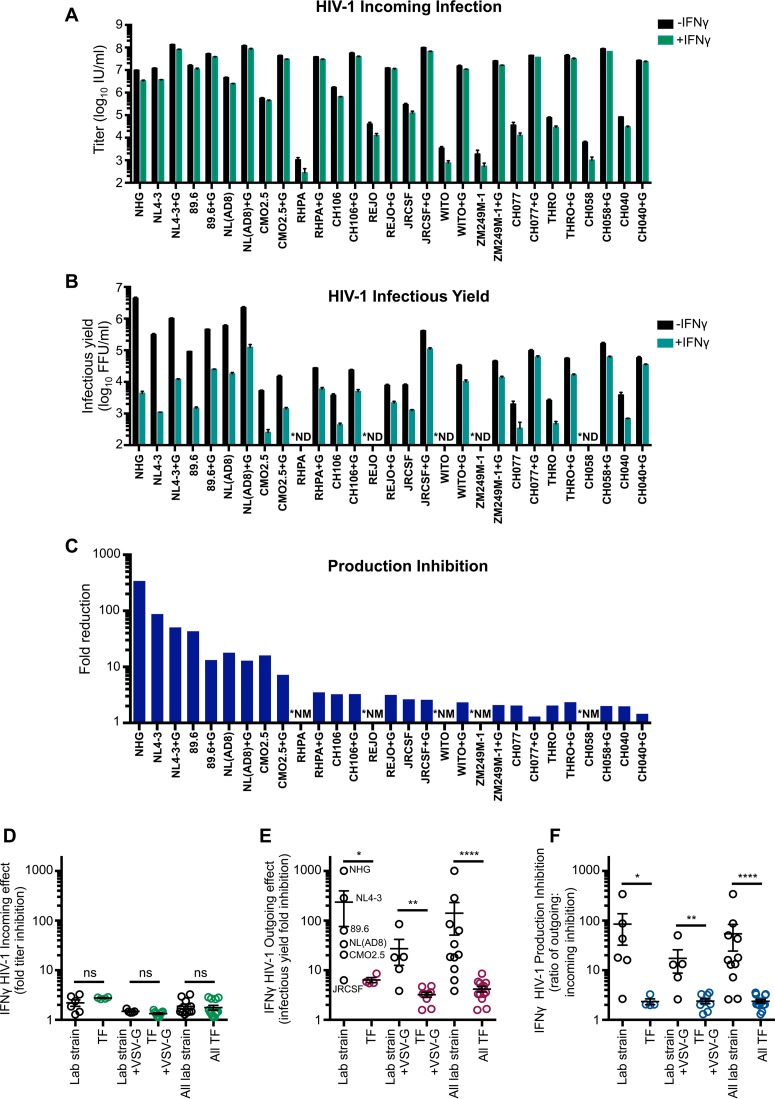FIG 5.
The late IFN-γ-induced block in MT4 cells is HIV-1 strain specific. (A) CCR5+ MT4-LTR-GFP (MT4-R5-LTR-GFP) indicator cells were untreated or pretreated (24 h) with 1,000 U/ml of IFN-γ prior to titrated challenge with a panel of HIV-1 infectious molecular clones with and without VSV-G pseudotyping. (B) The infectious yield of HIV-1 (pseudotyped and nonpseudotyped, as indicated) produced from MT4-R5-LTR-GFP cells with or without IFN-γ pretreatment was determined through titration of the indicated progeny virus (harvested at 46 to 48 h postinfection) on TZM-bl indicator cells. (C) To quantify the IFN-γ-mediated block to HIV-1 infectious virus production while taking into account weak early blocks to infection, the mean fold reduction or inhibition in production (normalized fold reduction) was calculated by dividing the mean reduction in infectious yield (fold change determined in panel B) for each virus by the mean protection from infection (fold change determined in panel A) for that virus. (D to F) Representations of the incoming, infectious yield, and production inhibition IFN-γ-mediated effects between HIV-1 lab strain and TF viruses, as indicated, using the data from panels A to C. Designations of TF (versus lab strain) viruses can be found in Table 2. In panels A to C, +G indicates viruses which have been VSV-G pseudotyped, *ND indicates viruses in which we were unable to measure the infectious yield as the incoming infectious titer was too low (without VSV-G pseudotyping), and *NM indicates not measurable (due to not detectable portion of calculation). Error bars indicate SEM (n = 3 to 5). Statistical analyses in panels D to F were performed using Mann-Whitney tests (****, P < 0.0001; **, P < 0.01; *, P < 0.05; ns, not significant, P > 0.05).

